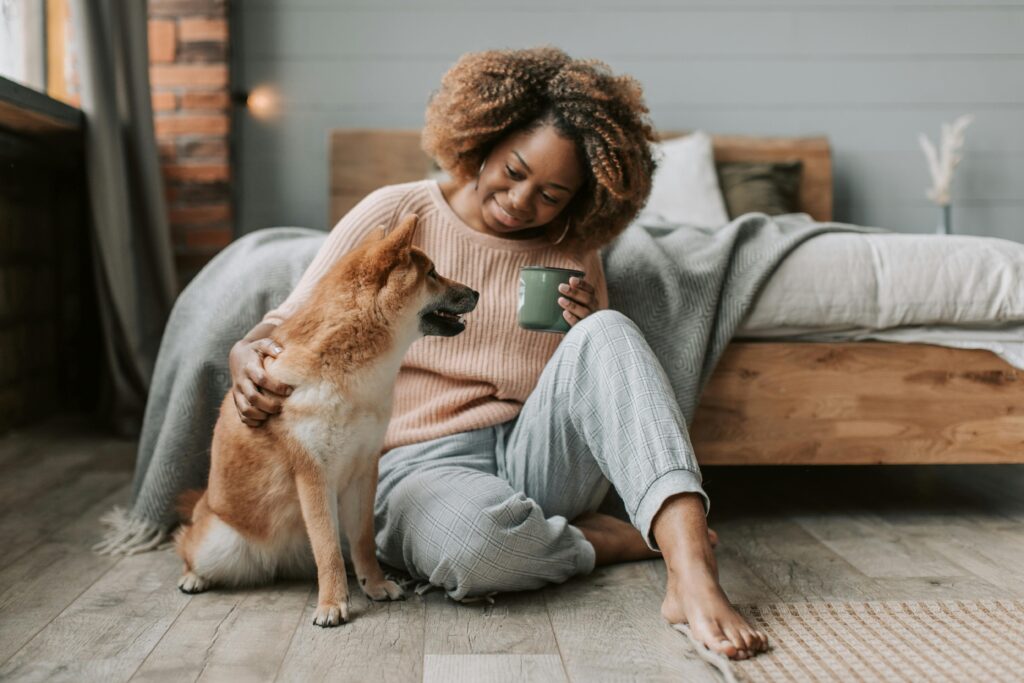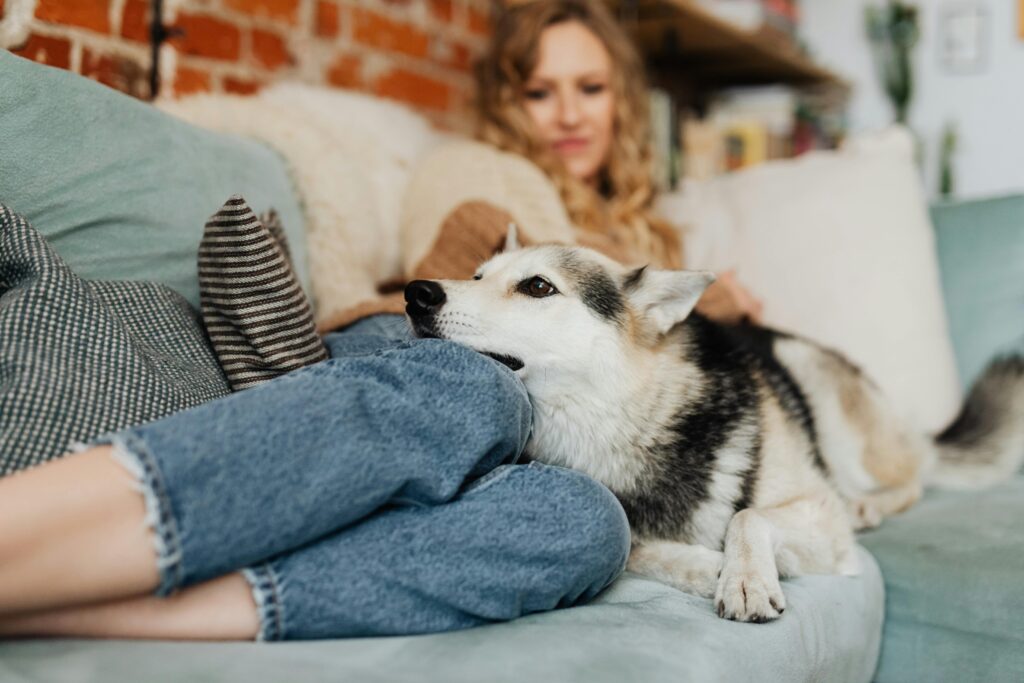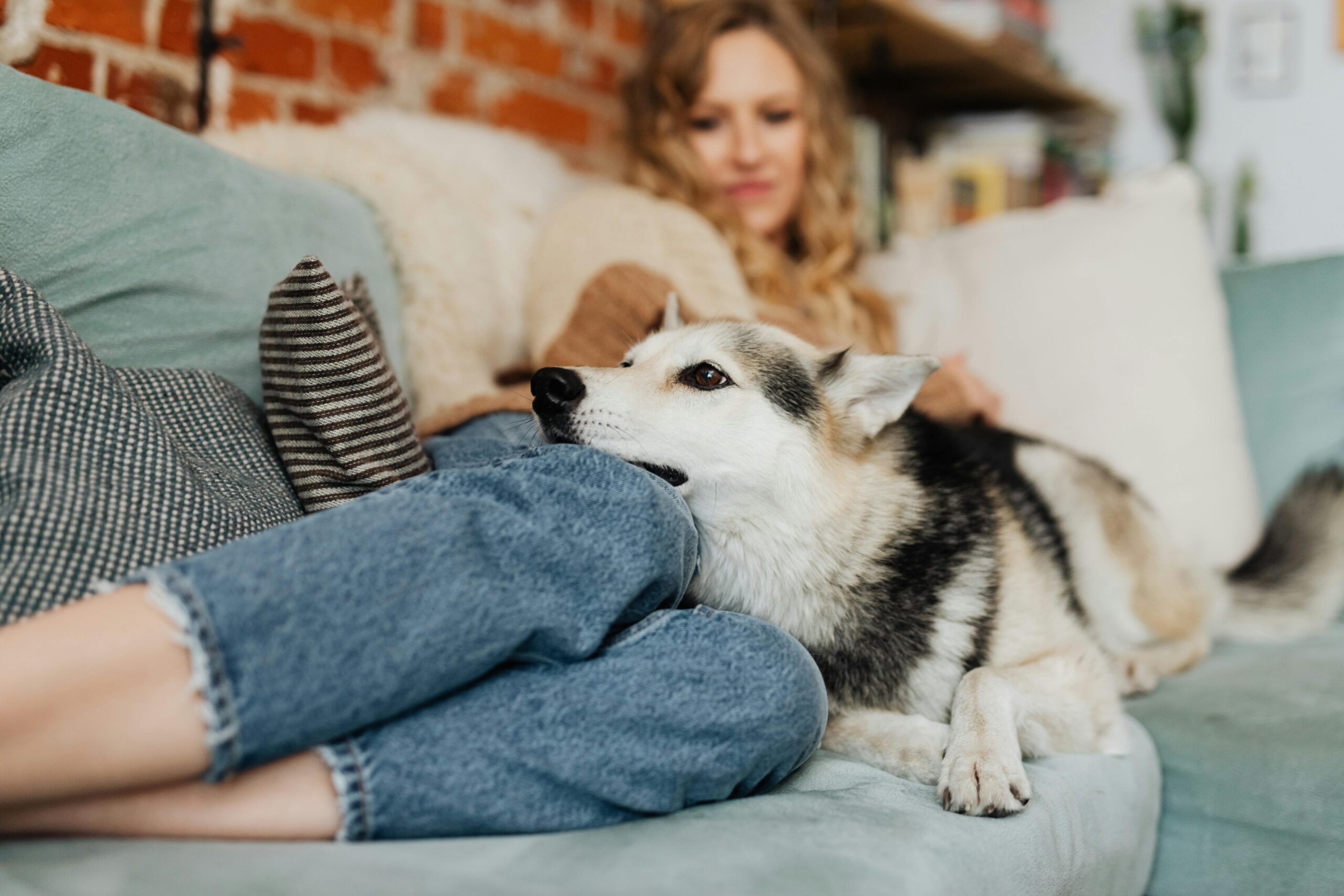I have seen a few social media posts recently where people are telling dog owners that in order to help their dog overcome their separation anxiety they should be withholding affection and attention when at home, and should totally ignore the dog for a certain period prior to going out.

I’m here to tell you this is incorrect, unsubstantiated and can be actually damaging to your dog’s emotional health…..and remember that separation anxiety is (the clue is in the name!) an anxiety-related disorder (N. Ogata, 2016), and we accept that anxiety in humans is not a quick thing to “fix”, and is complex in nature, but why then are there still people out there who dont extend the same courtesy to dogs?
If you have a dog suffering with separation anxiety you do NOT need to do any of the following:-
- Withhold attention for an hour prior to leaving the house (if we think about it logically, if a dog is anxious about being left home alone, why on earth would ignoring them ever make them suddenly feel more confident and be all of a sudden fine coping with alone time?)
- Only talk or interact with your dog when you are “telling” them to do something (how sad would this be – to have a dog as a family member, and then ignore them for 75% of the day unless you are treating them like a robot and telling them what to do. How would that feel to us humans if the people we lived with ignored us unless they were barking commands at us? It certainly wouldnt improve any anxiety we felt, and actually is likely to increase anxiety. Remember that dogs are social animals, so there is also an ethical aspect to forcing more isolation on them than what we already expect of them by asking them to live in our homes)
- Only give your dog attention on your terms – ignore them if they seek affection (again, what a sad life this would be. Sad for us humans, but also think what an extra layer of anxiety and stress your dog will be experiencing if every time they want or need attention (because yes, dogs will often seek comfort at times of stress or fear) they get totally ingored)
- Keep your dog in a separate room from you when you are at home to ” get them used” to spending time apart from you (please bear in mind that if your dog is already anxious about being alone, forcing them to be exposed to the thing that elicits fear is only likely to further reinforce that association between alone time and fear. Obviously there are some dogs that are OK being in a separate room at home, but not OK being left home alone, but if your dog is not comfortable with this, dont do it! Even if your dog IS comfortable being in a separate room, its not going to make much difference to how they feel about being left home alone, so just let them be where they want to be)
Research has proven that we absolutely do NOT need to do any of these ridiculous things above in order to teach a dog to feel safe home alone….and actually withholding affection and ignoring your dog can increase their anxiety
“Avoidant owners are less responsive to the dog’s needs and do not provide a secure base for the dog when needed and as a result dogs can form an insecure attachment and develop SRBs (separation related behaviours)” (V. Konok et al, 2015)

Whilst we are on the subject of incorrect, outdated advice, we also know that activities previously referred to as “spoiling” (but are actually just treating your dog like a loved family member) such as having them on the sofa, sleeping on your bed etc, have zero impact on separation anxiety!
So please believe me – teaching your dog to feel safe home alone involves the following:-
- Assessing for/ruling out other factors impacting the behaviour (pain & medical conditions (this is a BIG one I see ALL the time) , external stressors, lack of needs being met to name a few)
- Assessing to identify what your dog’s “threshold” for alone time is (ie at what point do they start to feel anxious during the leaving process, how quickly does it escalate, and what behaviours/body language do they show)
- Embarking on a systematic desensitisation protocol to start to gradually and incrementally change their emotions so that they start to feel safe with being home alone
You do NOT need to ignore, withhold attention or stop them resting or sleeping on the sofa or bed!
If you would like help working through your dog’s separation anxiety, or have concerns your dog may be in pain and would like to organise a Dynamic Dog assessment, please get in touch! Book a FREE initial call to find out more: Remote Online Separation Anxiety Dog Training (politepawsdogtraining.co.uk)
Angela Doyle – Polite Paws
2025




